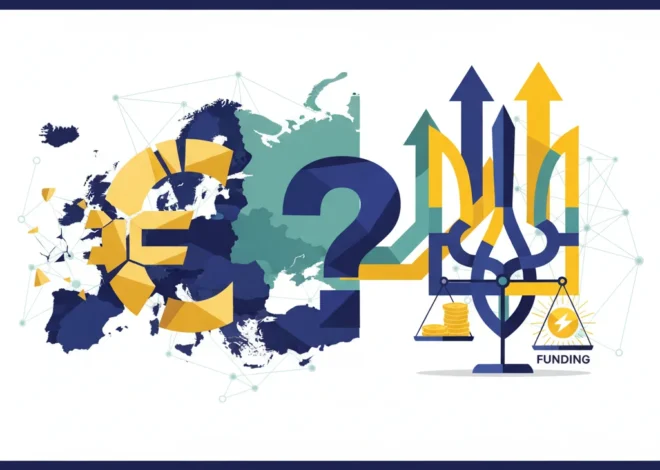
The Great Economic Reset: Why the Old Rules of Finance No Longer Apply
We stand at a pivotal moment in the global economy. For decades, investors, business leaders, and even the general public operated with a clear set of financial rules. Central banks, like the U.S. Federal Reserve, were the independent guardians of price stability, tasked with keeping inflation low and predictable. Governments, in turn, managed their budgets and spending. These two domains—monetary and fiscal policy—were distinct, creating a stable and understandable environment for finance and investing. That era is over.
The aftershocks of the 2008 financial crisis and the unprecedented response to the COVID-19 pandemic have shattered this old settlement. We now live in a world defined by two monumental challenges: soaring public debt and colossal central bank balance sheets. The once-clear line between those who print the money and those who spend it has become dangerously blurred. According to the original analysis in the Financial Times, a new regime is urgently required to navigate this treacherous new landscape. This isn’t just an academic debate; it’s a fundamental shift that will redefine economics, trading, and the stability of the stock market for years to come.
The Cracks in the Foundation: How the Old System Broke
To understand where we’re going, we must first appreciate the system we’re leaving behind. The post-1980s consensus was built on the principle of central bank independence. The idea was simple: shield monetary policy from short-term political pressures. By giving central bankers a clear mandate—typically targeting 2% inflation—they could make the tough, sometimes unpopular, decisions needed to keep the economy on an even keel. Governments, meanwhile, would handle fiscal matters like taxes and spending. This separation was the bedrock of modern finance.
Then came two seismic events:
- The 2008 Global Financial Crisis: When traditional interest rate cuts hit zero, central banks unleashed unconventional tools, most notably Quantitative Easing (QE). They began buying massive quantities of government bonds and other assets, injecting liquidity into the banking system and swelling their balance sheets to previously unimaginable sizes.
- The COVID-19 Pandemic: This crisis saw an even more dramatic fusion of monetary and fiscal power. Governments rolled out trillions in stimulus, and central banks effectively financed much of it by purchasing the resulting debt. It was a necessary emergency response, but it cemented a new, more entangled relationship.
The result is a global economy struggling with a hangover of epic proportions. Public debt levels in many advanced economies are at their highest since World War II. Central bank balance sheets remain extraordinarily large. This new reality creates a dangerous feedback loop, threatening the very independence that once guaranteed economic stability.
The Twin Titans of Risk: Fiscal Dominance and Balance Sheet Headaches
The current economic environment is dominated by two interconnected problems that make the old playbook obsolete. Understanding them is crucial for anyone involved in investing or business strategy.
1. The Specter of “Fiscal Dominance”
With government debt at historic highs, the decisions made by central banks have enormous fiscal consequences. When the Federal Reserve or the European Central Bank raises interest rates to combat inflation, they also dramatically increase the cost for the government to service its debt. This creates immense political pressure on the central bank to keep rates lower than they otherwise would, a phenomenon known as fiscal dominance. In essence, the government’s borrowing needs begin to dictate monetary policy, undermining the central bank’s primary mission to control inflation. This conflict puts the long-term health of the economy at risk for short-term political convenience.
2. The Central Bank’s Trillion-Dollar Problem
The second challenge stems from the massive portfolios of government bonds that central banks now hold. When interest rates rise, the market value of existing bonds falls. This means central banks are now sitting on hundreds of billions of dollars in unrealized losses. While these are largely accounting losses, they are politically toxic. Critics can claim the central bank is “losing” taxpayer money, creating another avenue of political pressure to keep rates low. This situation distracts from the core task of managing the economy and can erode public trust in a critical institution.
Forging a New Settlement: A Blueprint for a Stable Future
If the old rules are broken, what should replace them? The challenge is to design a new framework that acknowledges the reality of high debt and large balance sheets while preserving the essential goal of long-term economic stability. The path forward involves two key reforms.
Step 1: Redefining the Rules of Engagement
The first step is to establish a new, explicit understanding between governments and central banks. This isn’t about abandoning central bank independence, but about setting clear guardrails for how they interact, especially during crises. A new settlement should include:
- Clear Boundaries: In normal times, central bank independence must be sacrosanct. Their focus should be on their price stability and/or employment mandates.
- Crisis Protocols: There should be a pre-agreed framework for how monetary and fiscal authorities will coordinate during a genuine national emergency (like a pandemic or major war). This prevents the ad-hoc, line-blurring measures we saw in 2020 from becoming the new normal.
- Government Accountability: Governments must take responsibility for their long-term debt sustainability. They can no longer operate under the implicit assumption that the central bank will always be there to absorb their debt on favorable terms. This requires a credible, long-term fiscal plan.
Step 2: Solving the Balance Sheet Overhang
To free central banks from the political trap of their balance sheet losses, an elegant solution has been proposed. Central banks could swap their holdings of government bonds with the treasury for a special, non-marketable, interest-bearing government security. This is essentially an accounting maneuver that would remove the interest rate risk from the central bank’s balance sheet. It would neutralize the politically damaging “losses” and allow the central bank to set interest rates based purely on economic necessity, not on the impact to its own portfolio.
To visualize the shift, consider the differences between the old regime and the proposed new framework:
| Policy Area | The Old Settlement (Pre-2008) | The Proposed New Settlement |
|---|---|---|
| Central Bank Role | Strictly independent; focused on a narrow inflation target. | Independent in normal times, with a clear crisis-coordination protocol. |
| Fiscal Policy Role | Managed separately from monetary policy; subject to political cycles. | Bound by a credible long-term debt sustainability plan. |
| Balance Sheet Management | Minimalist; used primarily for managing short-term bank liquidity. | Insulated from interest rate risk via asset swaps with the treasury. |
| Crisis Response | Ad-hoc and largely monetary-led (QE, rate cuts). | Pre-defined framework for joint monetary-fiscal action in emergencies. |
What This Means for Your Investments and Financial Strategy
This shift from one economic regime to another is not merely academic. It has profound implications for anyone involved in finance, trading, and investing.
- Increased Volatility: The transition period will be marked by uncertainty. Markets will react sharply not just to inflation data, but also to political news related to fiscal policy and central bank appointments. Navigating the stock market will require a greater appreciation for political risk.
- The Rise of Fiscal Policy as a Market Mover: For years, the mantra was “Don’t fight the Fed.” In the new era, government budget announcements, debt auctions, and tax policies will become just as critical to watch as central bank statements. The interplay between the two will be a key driver of market performance.
- A New Case for Alternative Assets: In a world where the lines between government spending and money creation are blurred, the appeal of assets outside the traditional system may grow. This could bolster the case for inflation hedges like real assets and potentially for decentralized systems built on blockchain technology, which are designed to be independent of government and central bank control.
- Innovation in Financial Technology: The complexity of this new environment will demand better tools. Fintech solutions that provide sophisticated risk analysis, real-time tracking of government financial health, and new platforms for trading and hedging will become indispensable for investors.
Conclusion: Charting a Course in a New World
The comfortable certainties that governed the global economy for a generation have evaporated. We have entered a new era defined by high debt and the complex, intertwined fates of governments and their central banks. Ignoring this paradigm shift is not an option. The failure to establish a new, coherent monetary-fiscal settlement risks a future of financial instability, resurgent inflation, and stunted economic growth.
For investors, business leaders, and policymakers, the task is to understand and adapt. This new world demands a more holistic view of the economy, one that appreciates the delicate dance between monetary and fiscal powers. Building a new framework is one of the most critical challenges in modern economics, and its success—or failure—will shape the landscape of finance and investing for decades to come.


